Outlet passing is one of those things that most teams and coaches I have been around take for granted and do not spend any time on with the exception of doing it to start different drills. A good transition team should have some rules on outlet passing. It does not have to be much but giving the players some direction on where to go helps every player know what to do and where to look on a defensive rebound. This understanding can help get the outlet pass out a second or two quicker which in turn can lead to the transition getting out earlier. A quick transition offense can get easy layups if the defense is not quick in getting back.
The first outlet passing is what I consider the standard look. If we are going to outlet pass to start a drill then this is how we get set up. One line is under the basket simulating a rebound. The 2nd line is in the corner. On the defensive rebound catch, the outlet player runs along the 3-point line waiting for a pass. The rebounder inside pivots. An inside pivot is taking the foot closest to the midline and pivoting with this foot towards the sideline. This inside pivot opens the rebounder up to the whole floor giving them better vision on the outlet pass. The rebounder finds the outlet player running along the 3-point line and delivers an overhead pass.
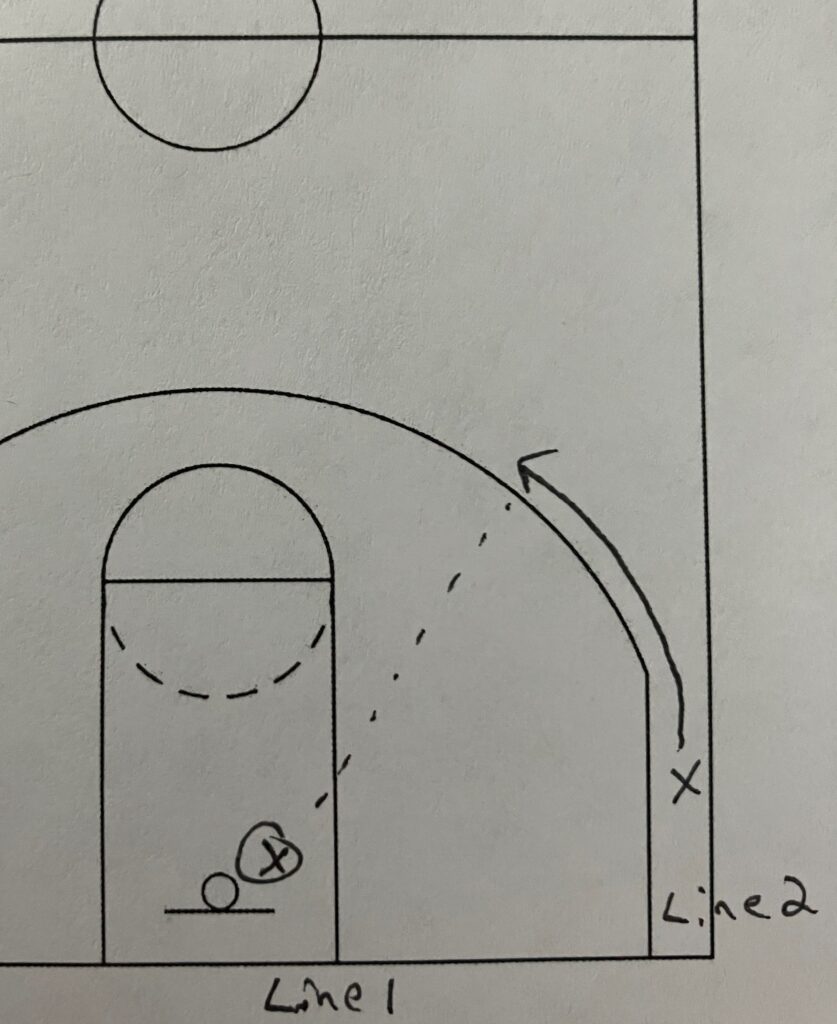
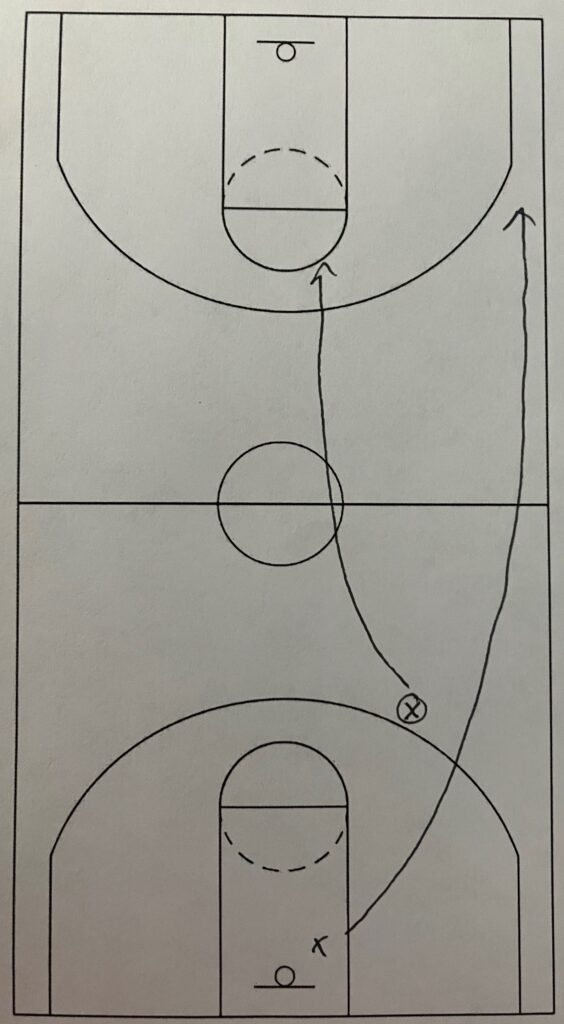
After the overhead pass, the outlet player continues up the middle of the floor to the 3-point line or foul line depending on what the drill or team does. The rebounder runs behind the outlet player to the sideline and up the floor. Again depending on what the team or drill is doing the rebounder will end up on the wing or corner. This is the generally start of any drill using an outlet pass with just 2 players.
The reason I like this setup for outlet passes in drills is because I teach my point guard to run to the rebounder side of the floor, on the sideline, and somewhere between the foul line and top of the 3-point line. I want the point guard moving towards the spot on the floor where this pass is being made. When you add in the inside pivot by the rebounder, an outlet pass hopefully occurs as the point guard is running to the sideline so they can just catch and turn up the floor before getting to the sideline. This helps to quicken up the transition offense.
Now what happens if the defense takes away the outlet pass? A good transition team should have a couple of counters in place so the point guard and rebounder can see the defense and react immediately to get a good outlet pass to start the transition against the aggressive defense. I like to practice these different releases so a defense is never able to take away the outlet pass to our point guard. The releases occur in the same setup as the normal outlet pass to keep continuity with practice and not waste any time changing positions on the floor.
Release #1-Banana Release
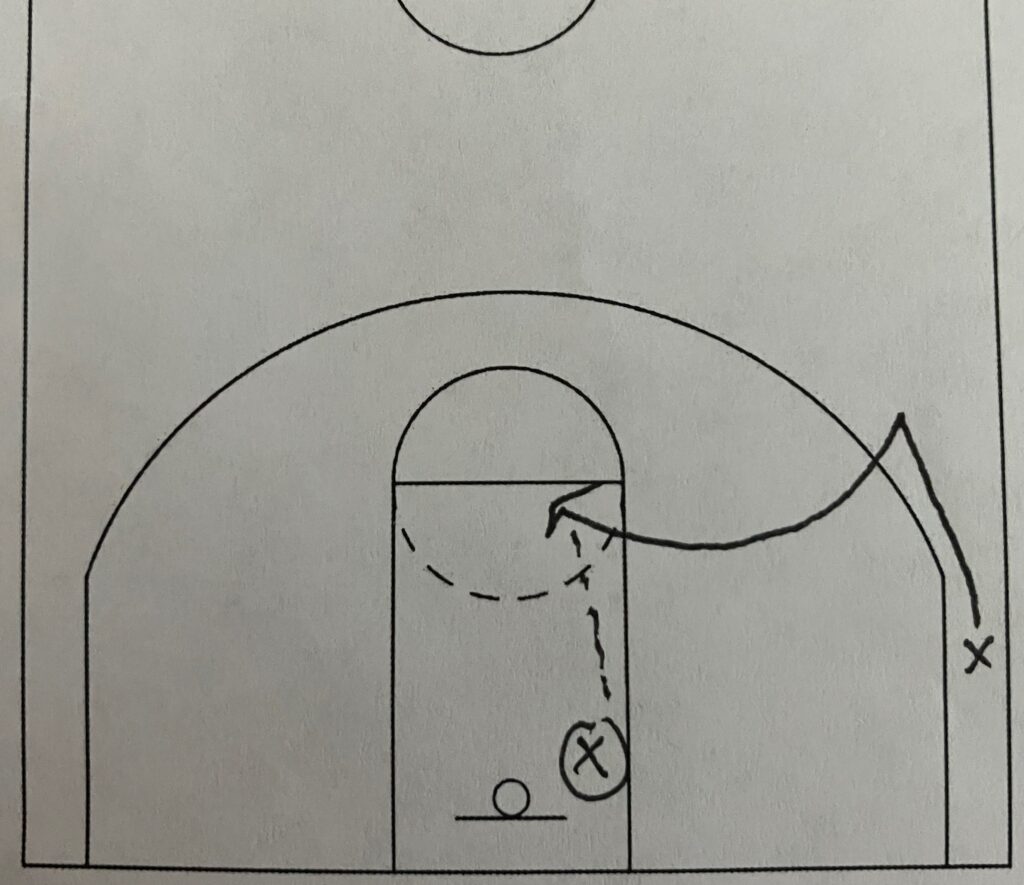
I call this a banana cut or banana release. This is when the defense is trying to take away a long outlet pass so they are guarding the outlet man. On seeing the defender in between the outlet man and rebounder, the outlet man fakes up the floor and cuts underneath the defender. As the point guard clears the defender they should start to turn their run more up the court. This gives the release some curve hence the banana name. This release basically changes the side of the floor the point guard is going to be bringing the ball up on.
Release #2-In-Out
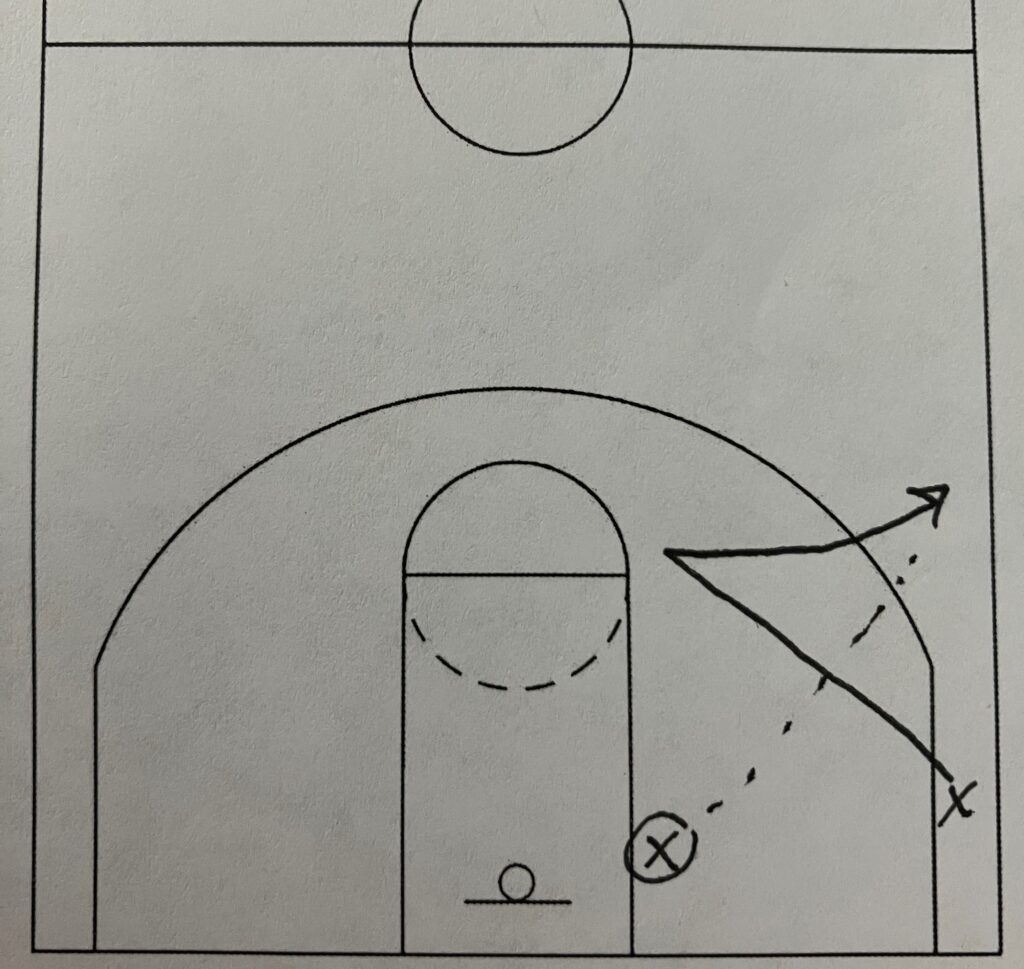
This release is used when the defense is trying to prevent the ball from being in the middle of the floor. The point guard runs into the middle trying to create as much space on the sideline as possible. As the outlet pass is ready, the point guard cuts hard back outside. The outlet pass meets the point guard on the outside cut. The hope is the point guard can start bending his cut even before the catch to create as much downcourt speed as possible. This will help to make a faster transition from defense to offense.
Release #3-Fake and Go
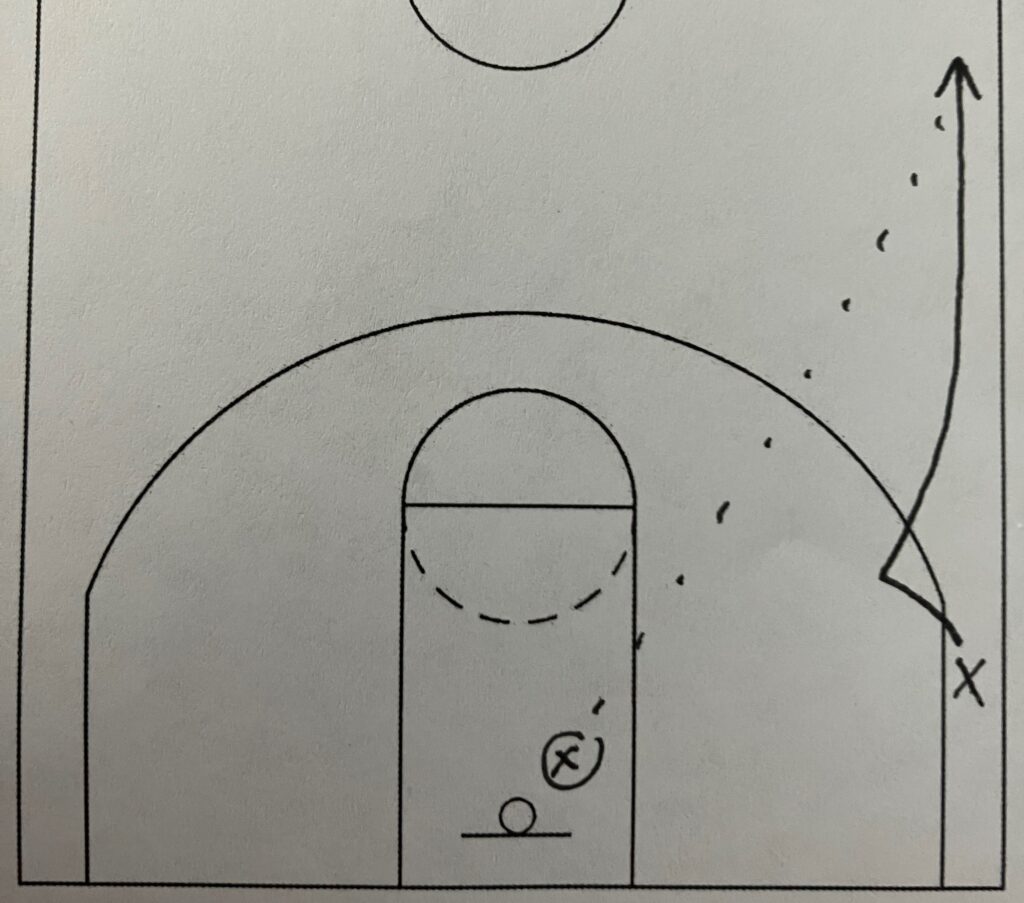
This release is when the defense is up denying the outlet pass. The defense is face guarding and not letting the two previous cuts be used. The fake and go outlet pass uses the aggressiveness of the defense against them. The point guard start the normal outlet pass cut but then plants and takes off down the court. The outlet pass is thrown over the head of the denying defender. Now the catch of the outlet pass is going to be closer to half-court rather than the 3-point line.
While it is best used when a point guard is being denied, it can be used at any time. When this long outlet pass is made, it can create very quick transition baskets. The outlet pass being long can help the point guard get pass the returning defense without having to use the dribble. The more defenders that can be cleared on the outlet pass, the easier it is to score in transition.
Release #4-Give and Go
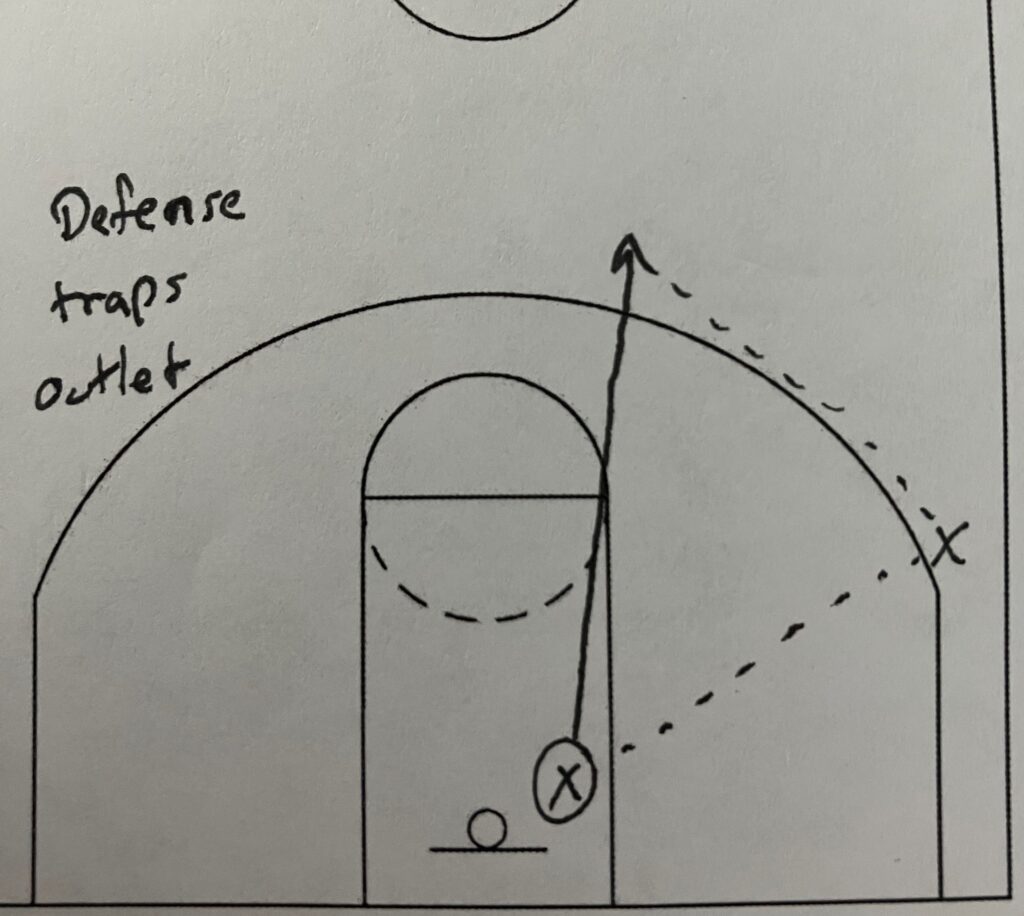
If the defense is looking to trap the outlet pass, then a give and go is a great counter to break the trap and get positive numbers in transition. The outlet pass is thrown. The defense jumps to a trap on the point guard. The rebounder sprints up the middle of the floor. As the trap gets to the point guard, they make a return pass to the rebounder. The rebounder now has the ball in the middle of the floor on the run. They have already cleared the two trapping defenders. This means there is only 3 possible defenders left to beat.
As a quick note, this type of release can be used against a Diamond(1-2-1-1) press to beat the press. The entry pass comes to the side. The point and wing defenders go to trap. If the inbounder can cut across the face of the backside wing, then a return pass can be made to the inbounder. A give and go against a diamond press can usually clear 3 defenders if the backside wing of the press allows the inbounder to cut their face.
Conclusion
A good outlet pass is a great tool for a team that is wanting to score in transition. The outlet pass is the start of transition. Players that know where to go and how to get open helps speed the change from defense to offense. Even on a made basket, a team can speed up the transition game. The difference with a made basket is the passer starts out of bounds instead of off a rebound. A point guard who knows how to get open even with a defense trying to prevent the outlet pass makes it so the defense can not stop the transition game. A good transition offense can be demoralizing for a defense. My advice is to take some time during practice and work on different releases so a defense can not stop your transition offense.

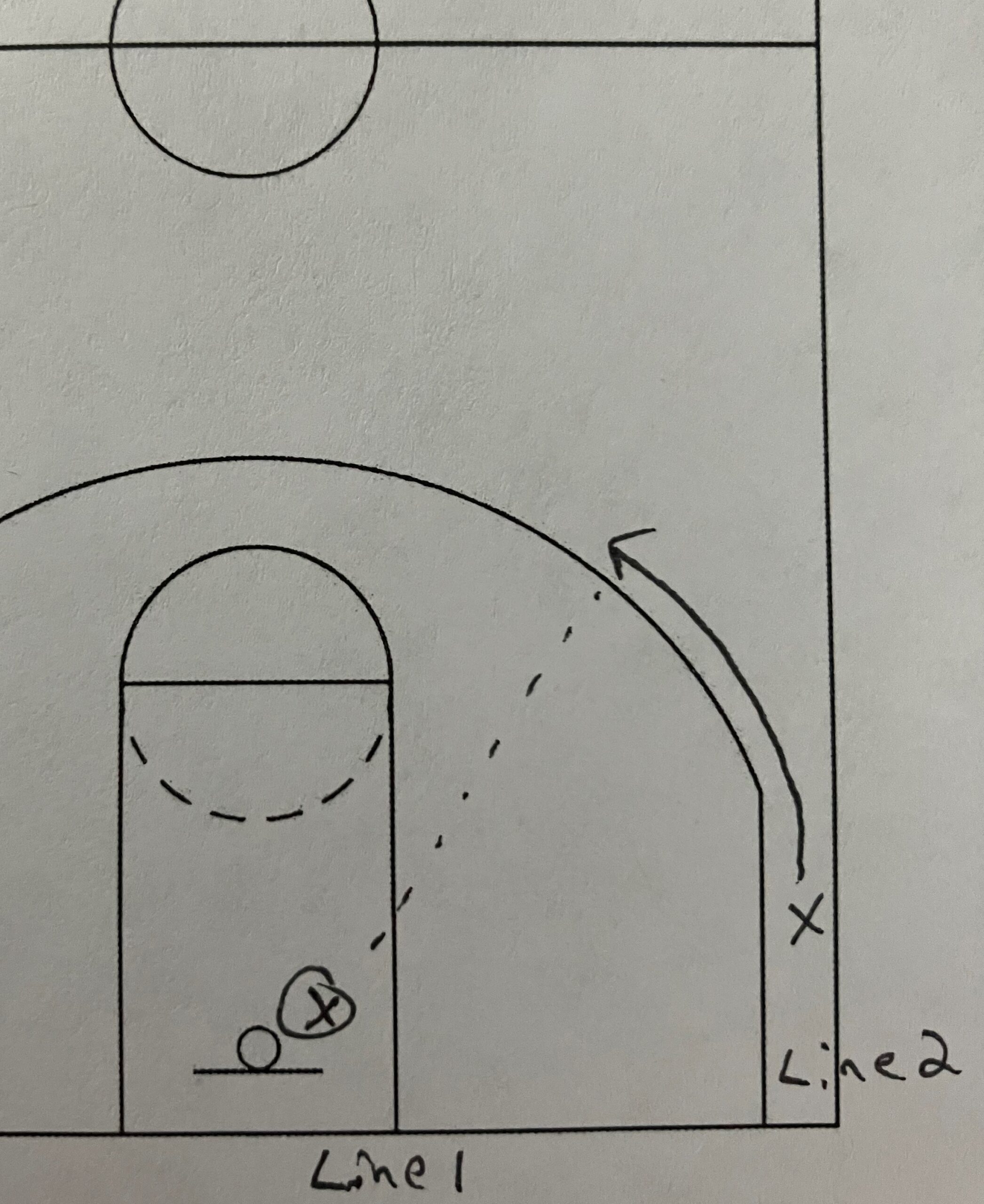
12 thoughts on “Outlet Passing”